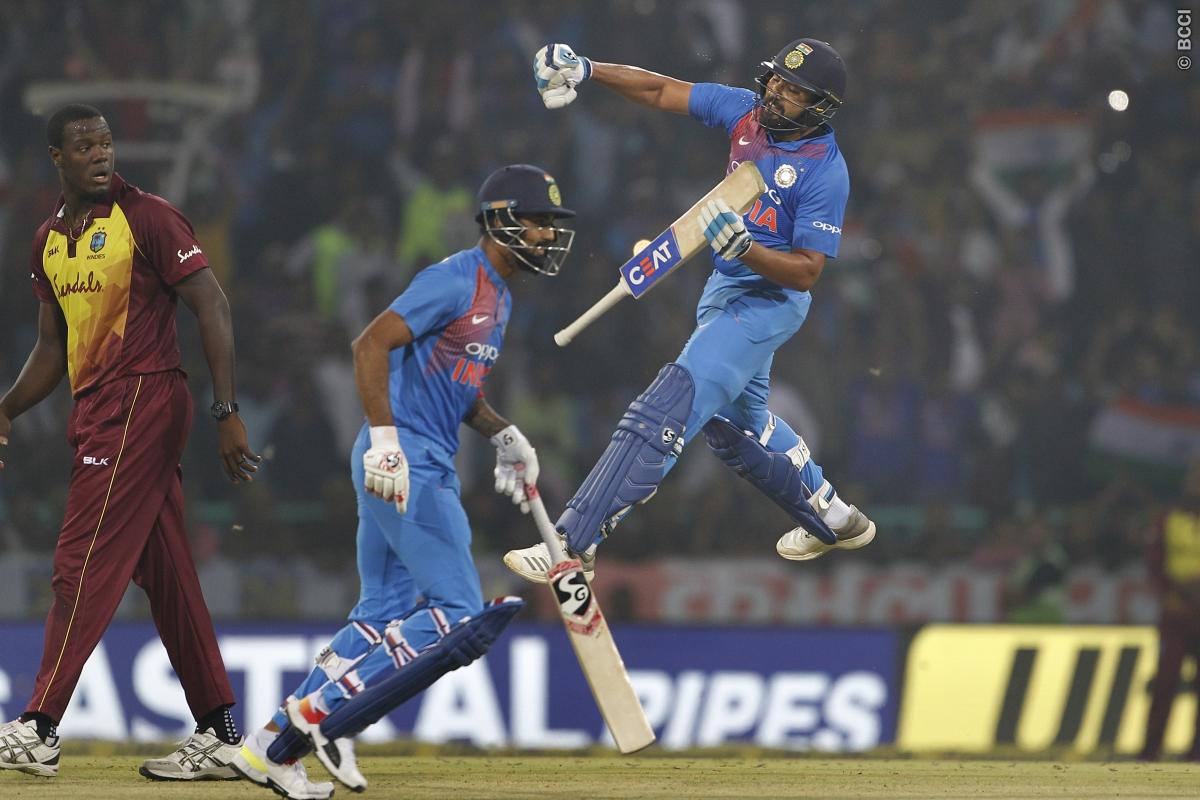India vs Windies | Takeaways : Rishabh Pant’s downswing dilemma and Rohit’s astute captaincy
After Tests and ODIs, India secured the T20I honours as well by winning the second ODI in Lucknow comfortably. While it turned out to be a memorable occasion for Khaleel Ahmed, Rohit Sharma’s brilliant tactical captaincy and Rishabh Pant’s negative movement in downswing came to the fore.

What is killing Rishabh Pant?
Looking back at the past two decades, the significant change about the modern-day batsmanship has come about in reference to the bat speed and not swing. A Virat Kohli is special because of the way he moves his wrists by not throwing the weight of your body behind the shot. However, Rishabh Pant is a clear anomaly.
The wicket-keeper batsman doesn’t have much power in his wrist and basically generates them from his high backlift and free-flowing downswing. The downswing that he creates after predicting the length of the ball results in the momentum coming through the exaggerated movement of the bat. In that case, arms invariably throws the weight of the body behind the ball and that is exactly the problem considering the fact that his downswing is not always in sync with the ball speed and when the bowler bowls a different delivery than expected, his posit
When he used his bottom-hand whip shot against Khary Pierre, he was down on his knees and although it is not a new phenomenon, he is suffering a lot because of that too. The diagonal backlift movement gets more pronounced when he tries to play aerial shots behind square leg and that is dangerous considering you can’t totally transfer the body energy in one single direction knowing the fact that it was the sideways angle that is befuddling him. If he can bring a change to his swing direction, it will surely be a step in the
Why did Bumrah not open the bowling?
Since the visitors had a left-right combination at the top, Rohit Sharma gave the new ball to Bhuvneshwar Kumar and Khaleel Ahmed with a slip and a short cover in place. The two fielders in the deep were long-off and deep midwicket, which suggested a near perfect outside line for the bowlers to target at.
Given Jasprit Bumrah is a bowler who mostly relies on nailing down yorkers from the word go in the T20 format, it was a right tactic from India’s point of view. The extra bounce on the new pitch at the Bharat Ratna Shri Atal Bihari Vajpayee International Cricket Stadium in Lucknow allowed Shimron Hetmyer to go aerial through the offside off the back foot and Khaleel’s angle proved detrimental to his stroke-play. And when Darren Bravo came on to the crease, he immediately got into the groove and played his natural game before Kuldeep Yadav got the better of Bravo. So, India’s plans worked very well, as Bumrah was kept for the post powerplay overs where he used his overs to great effect to break Windies’ back.
Grooming, what grooming?
As an explanation to MS Dhoni’s absence in the T20 team, chairman of selectors MSK Prasad had stated that they took the decision in order to groom more youngsters for the wicket-keeping slot and it was a careful decision taken in consultation with
It is a decision fraught with a lot of confusion. Given the way Karthik’s career is moving forward, it is a dangerous tactic to station him behind the stumps. On the other hand, whatever the current T20 form may be, Pant is India’s keeper for the World T20 in 2020 and everybody and their grandmother knows this. So, what type of grooming is this?
Secondly, Pant is a terrible fielder in the deep and in no way, can he be effective there. So having him behind the stumps and sending DK to the outfield would have served India dual benefits.

Comments
Sign up or log in to your account to leave comments and reactions
0 Comments